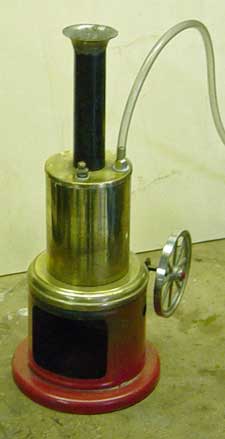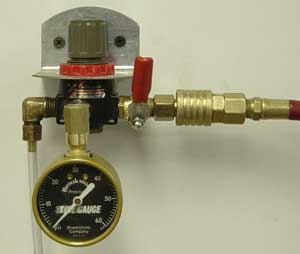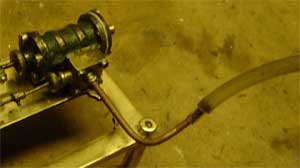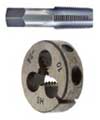
Running A Model Steam Engine On Air
|
Why Run On Air
Running a model steam engine on air pressure is a good way to check out used engines you have just purchased to see what kind of runners they are and if there are problems before you actually steam them up. You can quickly check any repairs you have made without having to contend with hot metal. Running on air is clean, it leaves no evidence such as soot or burnt paint on restored engines. With a pressure gauge you can get a good idea how efficient the engine is, particularily engines without regulator valves. What You Need You will need an air compressor, any compressor will work from small art brush models to huge multi-horsepower models. You will need a regulator for the compressor with a gauge showing the output in PSI or bars depending on which country you live. Most compressors come equipped with a regulator and gauge, this will work but I prefer to have a dedicated regulator set up on my bench. The reason for this is that I was once working on a very rare Doll engine, I had turned the pressure down on the regulator to check it and did not get back to it for a few days. I turned the air on again, there was a pop and I had dust blowing all around my bench. I had turned the regulator back up to 90 PSI to use my nail gun in the interm and had forgotten to turn it back down, popping the seam in the bottom of the boiler.
Running On Air 1. Remove whistle and insert adapter, leave safety valve in place. 2. Oil all moving parts of engine, this is important as live steam actually acts a lubricant, air tends to dry parts. 3. Turn regulator down to shut of any air flow, before connecting supply hose to engine. 4. Slowly increase air pressure until engine turns over, most engines will start to run at around 5 PSI or less.
|






